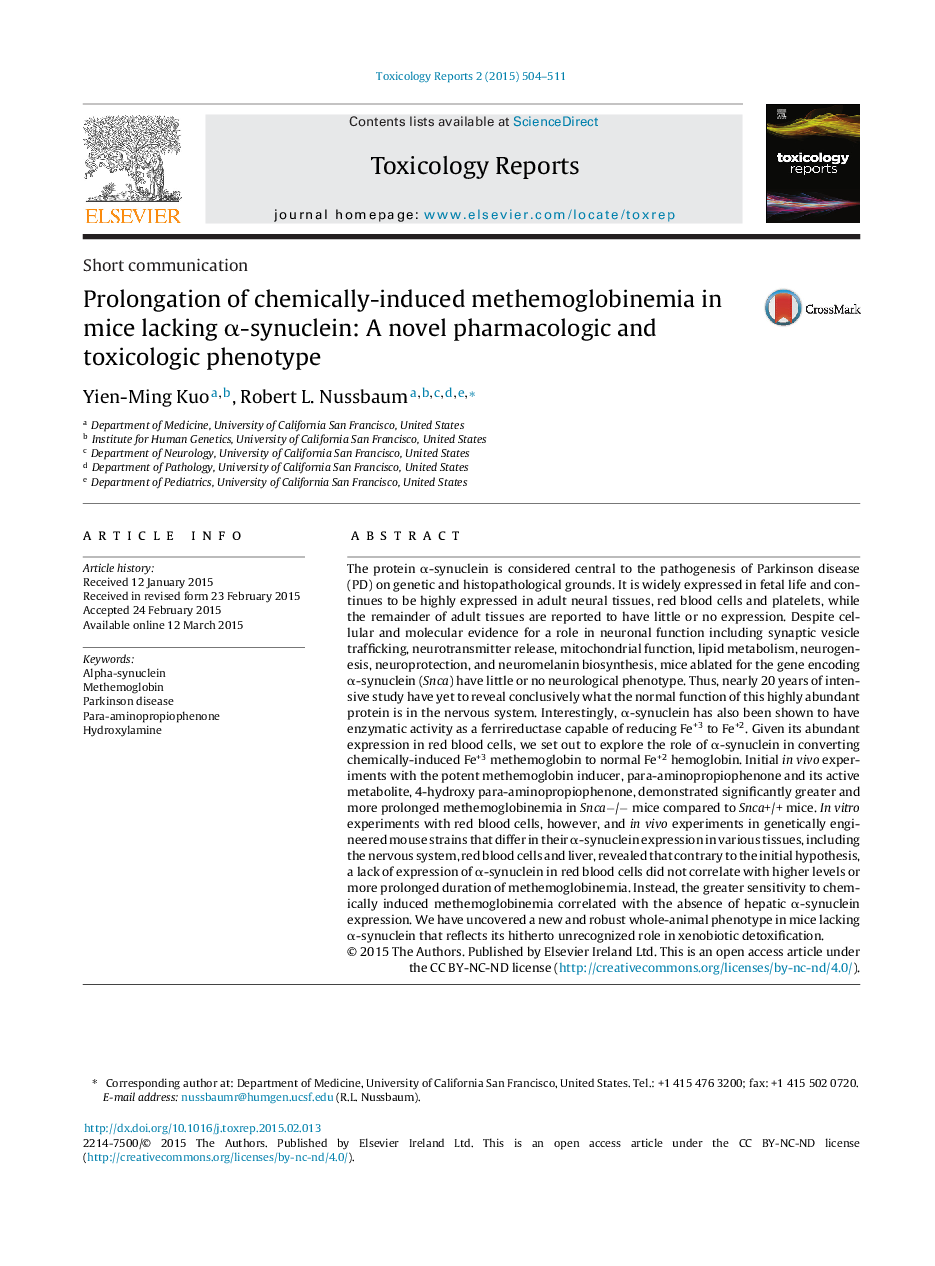| کد مقاله | کد نشریه | سال انتشار | مقاله انگلیسی | نسخه تمام متن |
|---|---|---|---|---|
| 2572242 | 1561192 | 2015 | 8 صفحه PDF | دانلود رایگان |

The protein α-synuclein is considered central to the pathogenesis of Parkinson disease (PD) on genetic and histopathological grounds. It is widely expressed in fetal life and continues to be highly expressed in adult neural tissues, red blood cells and platelets, while the remainder of adult tissues are reported to have little or no expression. Despite cellular and molecular evidence for a role in neuronal function including synaptic vesicle trafficking, neurotransmitter release, mitochondrial function, lipid metabolism, neurogenesis, neuroprotection, and neuromelanin biosynthesis, mice ablated for the gene encoding α-synuclein (Snca) have little or no neurological phenotype. Thus, nearly 20 years of intensive study have yet to reveal conclusively what the normal function of this highly abundant protein is in the nervous system. Interestingly, α-synuclein has also been shown to have enzymatic activity as a ferrireductase capable of reducing Fe+3 to Fe+2. Given its abundant expression in red blood cells, we set out to explore the role of α-synuclein in converting chemically-induced Fe+3 methemoglobin to normal Fe+2 hemoglobin. Initial in vivo experiments with the potent methemoglobin inducer, para-aminopropiophenone and its active metabolite, 4-hydroxy para-aminopropiophenone, demonstrated significantly greater and more prolonged methemoglobinemia in Snca−/− mice compared to Snca+/+ mice. In vitro experiments with red blood cells, however, and in vivo experiments in genetically engineered mouse strains that differ in their α-synuclein expression in various tissues, including the nervous system, red blood cells and liver, revealed that contrary to the initial hypothesis, a lack of expression of α-synuclein in red blood cells did not correlate with higher levels or more prolonged duration of methemoglobinemia. Instead, the greater sensitivity to chemically induced methemoglobinemia correlated with the absence of hepatic α-synuclein expression. We have uncovered a new and robust whole-animal phenotype in mice lacking α-synuclein that reflects its hitherto unrecognized role in xenobiotic detoxification.
Journal: Toxicology Reports - Volume 2, 2015, Pages 504–511